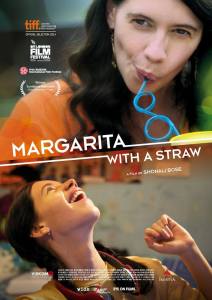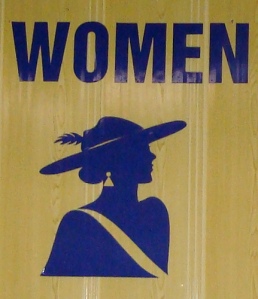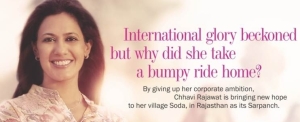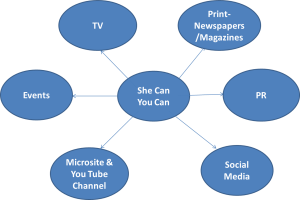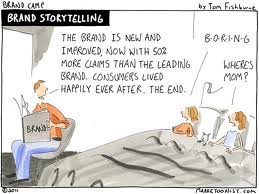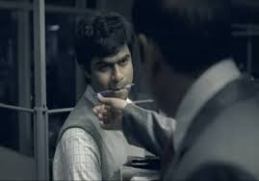It started with Sakina’s comment on my blog. She was working with Four Fountains Spa as a Digital Marketing Manager and wanted to offer me a complementary therapy at their spa chain….The spa freak that I am, I jumped at the offer.Later that day, after a de stress therapy which lasted for almost a couple of hours, a detailed diet plan and a good feeling, I left the Four Fountains Spa in Gurgaon.
The easy option would be to write a review. But that’s not what I wanted to do. For a long time now, I have wondered at the mushrooming spa chains in the country. Besides, I found it particularly interesting that a spa chain would have such an evolved digital marketing strategy. So instead of writing a review, I decided to interview Anurag, Director of The Four Fountains Spa Chain.
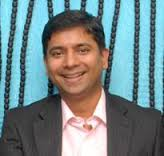
Director, Four Fountains Spa
How did it all begin? What got you excited about spas?
There are three of us involved in this- Anurag Kedia, Saurabh Garg and Sunil Rao. We are all management graduates of the batch of 2004. Saurabh and Sunil were working with Hindustan Lever. Anurag was with KPMG Consulting, Saurabh and Anurag went to IIM Ahemadabad and Sunil went to SP Jain. As part of our regular jobs, we were traveling a lot. The companies would put us up in fancy five star hotels where the entire bill would be taken care of by the company except the spa bill. With our hectic travel schedules, we would crave for a massage, but a spa therapy in our hotels would cost around 4-5 K. Even outside five star hotels, the price points were not very different. Another feeling was that even coming from some of the best places, we felt out of place when we were in a spa. The entire approach towards customers was very snooty. It was almost like a fine art gallery, where if you went, you were supposed to know what fine art is.
What came to our mind was that maybe nobody has thought of spas which are affordable. The language of spas is very romanticized even when customers who go there are middle class customers.
Four fountains has a solutions and health focus. The communication is aimed at explaining the customer the end results of the therapy and is therefore not obsessing on the threadbare details of the process.
Why are spas mushrooming now?
There are certain macro-economic changes that are happening. People are commuting more, increased work pressures, relationship demands. There is an increased focus on health. Why is Kellog selling so many more cereals today? Yoga classes today? IF in 90s, someone went to a gym, you would associate him with body building. Today if you don’t go to the gym, you feel guilty about it. There is a general consensus that going to the gym is a good health practice.
Similarly, if you look at the concept of massages, new borns and their mothers in India are given massages for the first few months. This is a very Indian concept. Indians really appreciate the concept of massages. However, when it comes to going to the spa, it is associated with pampering rather than health. We felt there is a disconnect between our understanding of massage as a culture and our understanding of spas. This is the reason why all our communication is aimed at re-establishing the value of massage from the point of view of health. It has been a conscious decicion not to use the word pampering, indulgence even once in any of our communication. We stress on research on benefits of the massage. We are trying to play a role that Café Coffee Day was playing 15 years back in terms of bringing in the coffee shop culture.
We are also catering to highly competitive price points to help customers adapt to the very concept of massage.
Why the membership model?
Because there are people who want to use very regularly. For such customers, we want to make the prizes very competitive. For walk in customers also, the prices are very competitive. Right now the membership
Old spas-700 to 800
Gurgaon- 50 or 100
Pune-1000 or 1200
Membership contributes to 50% of our overall revenue.
What is your focus on training?
As a brand we have a training academy in Pune. It is a 60 day training programme, for 9 hours every day. It is one of the most intensive training programmes in the industry. The contact hours 450. There is a test at the end of the training programme. If they don’t get a minimum score, they are not sent to the spas. The scores are on individual therapies. Every 12 months, there is an audit.
This is also CSR in a way. We are providing this free of cost. We have an NGO tie up for sourcing candidates to identify the right candidates with the right attitude. We not only provide free training, but also accommodation. The starting salaries are 10K. The tips range from 2-4K.
In terms of growth path, we offer an increment every six months. People are promoted to senior therapists and the ones who perform very well then move up to become trainers.
